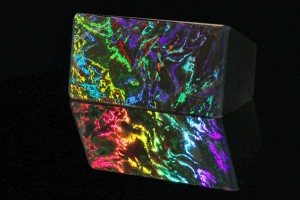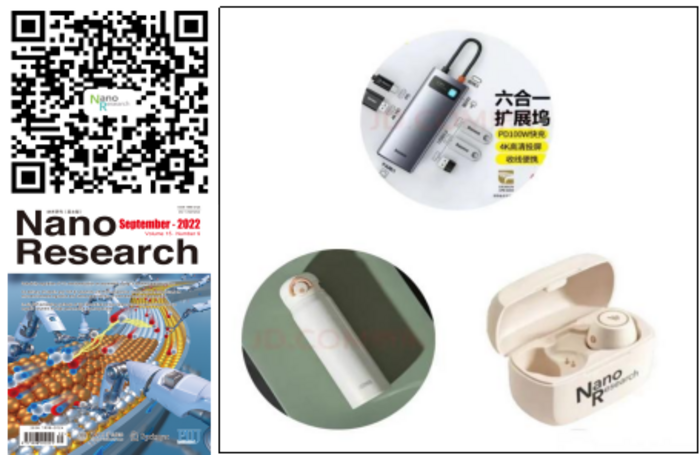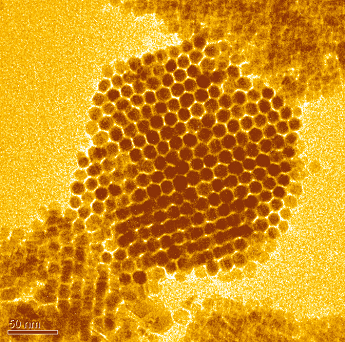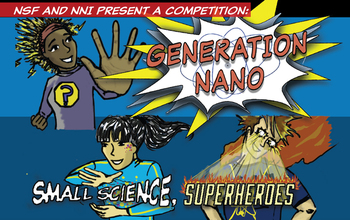A June 23, 2014 news item on Nanowerk announces a 2014 photography competition focusing (pun intended) on NanoART (Note: Links have been removed),
The contest supports the atmosphere of discovery and wonder that nanoscience and nanotechnology research represent. The first objective of this competition is for participants to have fun. The second objective is to promote the public interest and acceptance of nanos: people new to the subject really begin to understand it when they see compelling pictures. Many of the illustrations, models and nanoscopic images produced in researching nanoscale science are very artistic in nature, transcending basic illustration.
For nRai® [Nano Risk Assessment International] and the Nanosciences Foundation [France], this contest is important to reward the hard work of non-Faculty researchers.
There is a monthly deadline, which means another six chances to win US$200, should you win your month, and a chance to win US$5 000 (1st prize), US$3 000 (2nd prize) and US$2 000 (3rd prize) for the 2014 calendar year. For the curious, this page hosts the 2013 monthly NanoART winners and their images (French language skills will be very helpful on this page).
Here’s more about 2014 from its contest page on the Nanosciences Foundation website,
This contest is open to all students and post-doctoral fellows. Images may be submitted by individuals or groups of labs located in France or in the European Union – but they should be the work primarily of students, rather than that of faculty. Subject matter (Particles used for image) shall be between 1nm – 100nm scale.
All work should be recent (completed within six months prior to submission) and original. The same image may be re-submitted up to three separate months, as long as the work is still fresh and has not previously won a prize.
Images shall be submitted via our online submission form, by the last Friday of each month. If the file is too large, contestant should bring/mail it on a flash drive, CD or DVD at the Foundation offices.
The winner will be announced by the fifteenth of the following month. …
Winners will be awarded a prize of US$200 by nRai®. In the event of a team entry, equal portions of the prize will be distributed to members within the team.
At the end of each year the monthly winning entries will be entered in a final competition for the award of annual scholarships. Cash prizes for the top three of the 12 monthly competition winners in each calendar year – will amount to US$5 000 (1st prize), US$3 000 (2nd prize) and US$2 000 (3rd prize).
All the prizes are offered by nRai®, the Nanosciences Foundation provides the logistical support required for the contest to take place.
…
will be ranked by a jury consisting of representatives from nRai®, the Nanosciences Foundation in Grenoble, the Collaborative Centre for Applied Nanotechnology in Dublin (Ireland), the London Center for Nanotechnology (England), the Interface Physics Group and the Gesellschaft fur Bioanalytik – both in Munster (Germany). The winning entry will be selected based on a combination of artistic quality and technical marvel. A visually striking image which illustrates an important principle in nanoscience or nanotechnology is just as valid for submission as one that is purely a visually-compelling picture.
This was the winning image for March 2014,

“Through the looking glass”
(L’échantillon mesure 2,5cm de long at 1,25 cm de large.
Les couleurs sont réelles et n’ont pas été modifiées par traitement d’image) Credit: Cyril HERRIER
The description provided on the webpage is in French (I will offer a rough translation),
L’effet d’opalescence obtenu était inattendu. Suivant l’angle de vue, différentes couleurs peuvent-être observées – à la fois sur l’échantillon et sur son reflet. Cet effet optique très coloré est dû au fait que la taille des colloïdes et la longueur d’onde de la lumière visible ont le même ordre de grandeur. Les couleurs visibles sur le cliché de Cyril sont réelles et n’ont subi aucun traitement de retouche d’image.
Cyril travaille actuellement sur le développement de biocapteurs (dispositifs de détection) en poursuivant ses travaux sur la structuration et la fonctionnalisation de surfaces.
I’m not sure I’d call this opalescent (l’effet d’opalescence) as it looks iridescent to me but I suspect Herrier was thinking of fire opals, hence his description. Regardless, this is an untouched image of what I believe to be a thin film sensor (dispositifs de détection) of some type. The colours are a consequence of the size (taille), of the colloids and the visible light wavelengths.
You can find more information about the Nanosciences Foundation here. The site is largely French language although not exclusively. I found more information about the other contest partner, Nano Risk Assessment International (nRAI) on its homepage,
Nano Risk Assessment International, Ltd. (nRai) equips nanotech and nuclear companies with tools for safe and sustainable growth
nRai, founded in 2008, is an integrated materials technology safety company that provides nanoscale material and nuclear material risk identification, assessment, and mitigation products and services.
nRai is parent to a suite of companies, operating globally, that are committed to enabling industry and government with an array of products and services for the entire lifecycle of nanotechnology product development, from discovery through commercialization and ultimate disposal. nRai companies also provide unique capabilities for nuclear assessment and nuclear detection.
…
nRai has operations in London, Dublin, Swansea (Wales), Münster, Austin, Houston, Charleston, and Denver; with additional plans in development for South America and Asia.
…
nRai’s portfolio companies’ products and services focus on ensuring safe, efficient and economical nanotechnology product development, and nuclear assessment and detection including:
customized nanoparticle research and development
nanomaterial characterization
toxicological risk assessment
workplace safety evaluation
product efficacy studies
government compliance
nanomaterial informatics
evaluation and design of manufacturing facilities for engineered nanoscale materials
nuclear military threat assessment and detection
nuclear energy waste assessment and detection
product liability risk quantification for insurers
intellectual property assessment
…
nRai’s affiliate companies’ products and services are informed and designed by leading subject matter experts in their respective fields and are custom-tailored to meet with regulatory requirements for its clients in countries across the globe.
nRai’s products and services provide value to multiple industry sectors, most notably:
Oil and Gas Exploration
Evaluation of Semiconductor Technologies
Nuclear Radiation Detection and Systems Development
Toxicology and Relationship between Nano and Nuclear in Biological Systems
That’s an interesting partnership; I wonder how it occurred.
Finally, good luck to all the competition entrants to NanoART 2014; The nRai® Nano Imagery Contest.




![National Geographic Kids March 2014 cover [downloaded from http://kids.nationalgeographic.com/kids/guinness-world-record-smallest-magazine/]](http://www.frogheart.ca/wp-content/uploads/2014/04/TwinPandas-228x300.jpg)
![February 2014 / Gems [downloaded from http://kids.nationalgeographic.com/kids/guinness-world-record-smallest-magazine/]](http://www.frogheart.ca/wp-content/uploads/2014/03/NtnlGeoKidsContestCover-228x300.jpg)